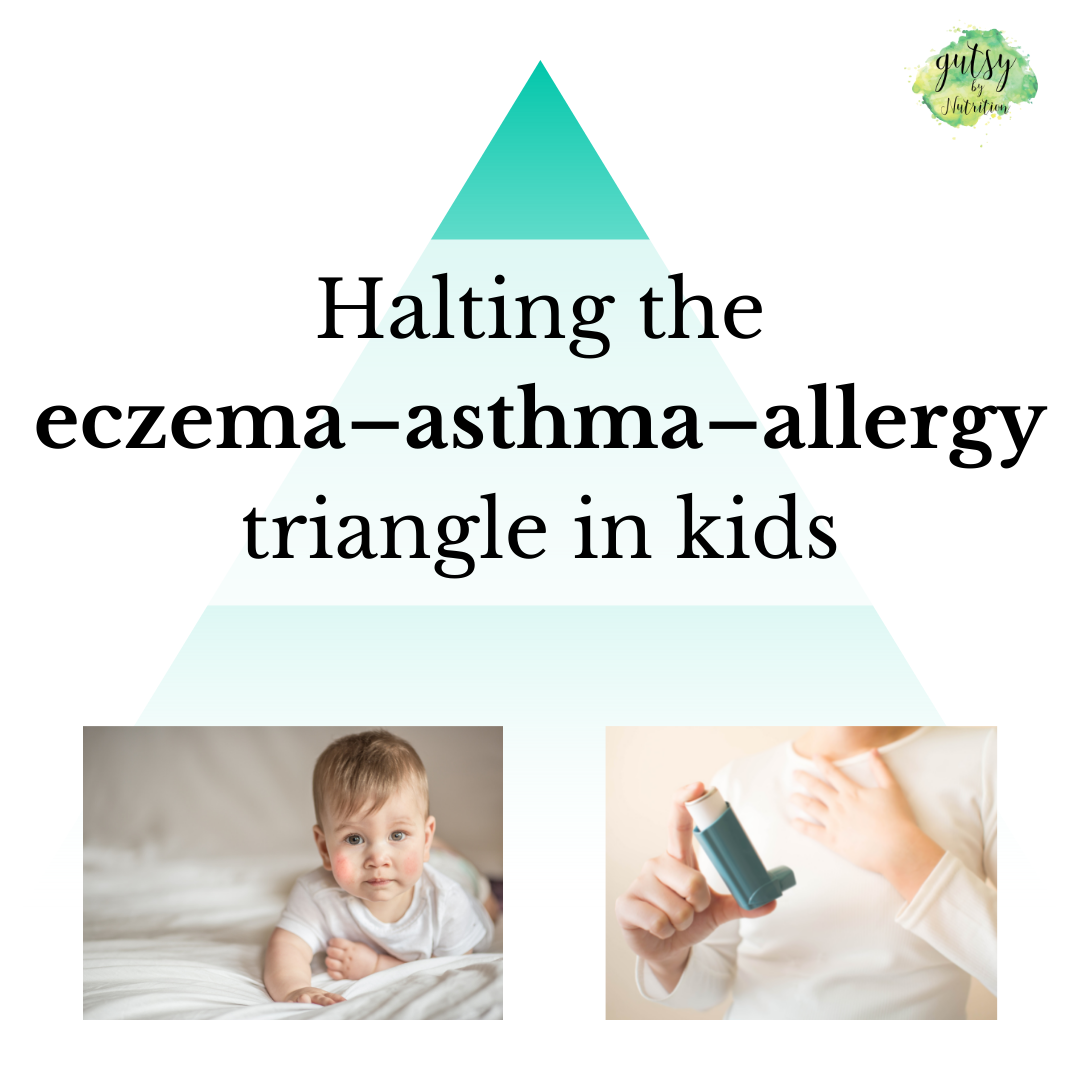Halting the eczema–asthma–allergy triangle in children
I commonly see infant and child clients with one or all of these conditions, and it’s important to understand that they often occur together.
The progression often begins with eczema – which is why it’s vital to nip this in the bud – followed by food allergies and asthma (as well as allergic rhinitis).
This progression is known as the ALLERGY TRIANGLE or ATOPIC TRIAD. It has been steadily rising since industrialisation began.
The ALLERGY TRIANGLE or ATOPIC TRIAD
Research shows that the prevalence of some allergic diseases, such as atopic dermatitis and asthma, was relatively high in very young children and that all of the principal allergic diseases in children often co-exist.
One paper concluded that 50% of children with atopic dermatitis (eczema) also developed asthma within the first year, and that 85 percent of them had their first asthma attach before 5 years of age. This is concerning.
what do they have in common?
But what does this mean – what do these conditions have in common?
All three involve chronic inflammation and a hyper, or disproportionately responsive, immune system.
The causes of this are believed to be a combination of genetics (internal) and environmental (external) triggers i.e. irritants or toxins inside or outside the body that turn on the immune system causing inflammation and symptoms that express in such ‘excessive’ ways.
A note here: Genetics is not destiny. It’s environment that switches any gene on AND off, whether you have a predisposition or not.
These irritants include…
Chemicals
Environmental allergens
Very hot or cold temperatures
Stress
Food sensitivities
Microbial infections (overgrowths)
Hormonal changes
the impact of the gut microbiome
Interestingly, one study showed that children with atopic dermatitis (eczema) at ages 6 months and 2 years had decreased intestinal microbial diversity at age 1 month. Also, infants with low intestinal microbial diversity at age 1 month were inclined to develop allergic asthma at school age.
Regarding the mechanism, an example is an overgrowth of the bacteria Faecalibacterium prausnitzii, which can be seen in eczema, which leads to the circulation of toxins causing skin inflammation and eczema.
Conversely, the bacteria Bacteroides fragilis induced an immune response that prevented the onset of asthma. Similarly, gut colonisation with Staphylococci at 2 months was related to a lower risk of eczema at 1 year.
how to halt the progression in infants and children
The great thing about infants and children is that they generally respond well and quickly to supportive changes, especially with diet.
This is empowering as it means your child’s health may be within your control and not at the mercy of external factors. Outside triggers will always exist, even when we try and reduce them, as we live in a toxic and stress-filled world. But there’s a lot you can do to support the internal environment of your child, and help build a balanced and resilient immune system that doesn’t over react.
my healing protocol
What I find works well in these cases is:
Testing the gut for infections and dysfunction
Eradicating infections and improving digestive function
Supporting the immune system
Calming inflammation, including by removing the most inflammatory foods. Dairy is a common trigger
Adding in more low-allergen vegetables, some fruits, and healing foods like bone broth and apple sauce
Taking targeted (the right) probiotics
Also, if you’re an adult experiencing these issues, better health could also be within your grasp using a similar approach.


